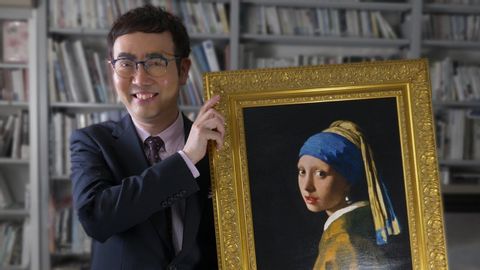
Subtitles & vocabulary
How a Japanese Otaku Decoded Vermeer's Art Materpieces ★ ONLY in JAPAN
00
Summer posted on 2020/07/30Save
Video vocabulary
introvert
US /'ɪntrəvɜ:rt/
・
UK /'ɪntrəvɜ:t/
- Noun (Countable/Uncountable)
- Person who does not like social contact
- Intransitive Verb
- To turn inward for energy and rejuvenation.
C1TOEIC
More obsession
US /əbˈsɛʃən, ɑb-/
・
UK /əb'seʃn/
- Uncountable Noun
- Irrational motive for performing certain actions
- An idea or thought that continually preoccupies or intrudes on a person's mind
B2
More basically
US /ˈbesɪkəli,-kli/
・
UK /ˈbeɪsɪkli/
- Adverb
- Used before you explain something simply, clearly
- In essence; when you consider the most important aspects of something.
A2
More experience
US /ɪkˈspɪriəns/
・
UK /ɪk'spɪərɪəns/
- Countable Noun
- Thing a person has done or that happened to them
- An event at which you learned something
- Noun (Countable/Uncountable)
- Knowledge gained by living life, doing new things
- Previous work in a particular field.
A1TOEIC
More Use Energy
Unlock All Vocabulary
Unlock pronunciation, explanations, and filters
